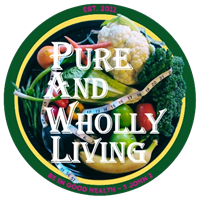Surprisingly, not only does kale contain nearly 3 grams of protein and fat (kale contains very little fat, but a large portion of the fat in it is an omega-3 fatty acid called alpha linolenic-acid), kale is chock full of vitamins, minerals, and antioxidants. It’s so rich in everything that’s good for you, kale scores the highest rank on the Aggregate Nutrient Density Index (ANDI). What’s that? I’m glad you asked.
The ANDI is a ranking of whole foods by the number of nutrients per calorie. It was designed by Dr. Joel Fuhrman and described in his book Eat For Health. The idea is that a healthy food should deliver a high number of nutrients packed in as few calories as possible.
ANDI scores range from a high of 1000 (for kale, mustard greens, collard greens and watercress) to a low of less than 1 (for cola). Here are just a few of the reasons why kale gets a perfect score.
Kale Protects Your Eyes, Blood and Bones
Kale has an incredible amount of carotenoids in its arsenal. In just one cup, it provides more than 10,000 IU of beta carotene, which your body turns into vitamin A.
That’s over 200% of the daily value of vitamin A you need for healthy skin, eyes, mucus membranes and your immune system.
In addition, that same one cup gives you high levels of lutein and zeaxanthin, two other carotenoids shown to prevent age-related macular degeneration.
These two nutrients are concentrated in the macula, a yellow oval in the center of your retina. The macula acts as a natural sunblock to protect your eye from ultraviolet oxidative stress that leads to macular degeneration.
Lutein and zeaxanthin have also been shown to protect against cataracts. In an Amherst School of Public Health study of over 50,000 nurses, those with the highest levels of lutein and zeaxanthin had a 22% decreased risk of cataracts.
Beyond carotenoids, just one serving of kale also gives you an incredible 1,328% of the daily value of vitamin K1, critical for proper blood clotting.
And one of the most amazing and little known benefits of kale is calcium. While most people rely on dairy for bone-building calcium, big boned animals like cattle and elephants get theirs from greens.
You’re probably familiar with the old commercial promoting cow’s milk that said, “Milk does the body good.” The fact is kale contains more calcium per gram than whole milk, and one study showed that kale’s calcium is 25% more bioavailable than dairy. That means your body is able to absorb the calcium in kale more readily than the calcium in milk.
How to Squeeze the Nutritional Benefits Out of Kale
Kale is such a powerhouse that you can add some to your breakfast juice every day. And juicing kale helps your body absorb its nutrients much faster.
Because there’s no fiber, the juice mostly bypasses your digestive system. All those vitamins, minerals and antioxidants shoot into your blood fast, giving you a burst of energy.
If you’re a juicing novice, you might want to keep it simple. Juice two apples, two leaves of kale and two celery stalks. It’s that easy!
Just be sure to use organic ingredients so you’re not drinking pesticides. Also, fresh juice won’t keep more than 24 hours in the refrigerator, so drink up.
Don’t have a juicer? Here’s a simple 3-ingredient recipe. Put one frozen banana, one cup chopped kale (again, it’s best to make it organic, as kale is number 3 on the Dirty Dozen list – right behind strawberries and spinach) and one cup of almond milk in a blender and let it whirl for a green smoothie.
How do you like your kale?
Adapted from Discovery Health
